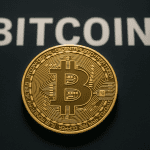Tether’s decision to load its reserves with gold and Bitcoin has become one of the most polarizing moves in the crypto industry, creating a strange split where traditional finance sees danger while the digital-asset community sees strength. As USDT continues dominating global crypto liquidity, its reserve strategy has shifted far away from the predictable, fiat-only model regulators prefer. Instead, Tether has embraced a hybrid approach, building one of the largest private gold vaults in the world while simultaneously stacking Bitcoin. This move, backed by years of profitability and historical resilience, has sparked questions about whether Tether is redefining the future of stablecoins or quietly inviting instability during a crisis.
The tension began when S&P Global evaluated this new reserve makeup and issued a downgrade, arguing that a stablecoin pegged to the U.S. dollar must rely on highly liquid, cash equivalent assets rather than volatile or hard-to-liquidate holdings. From their perspective, gold is deeply valuable but not ideal when massive redemptions need to be satisfied instantly, while Bitcoin’s price swings add unnecessary risk to the peg. The presence of secured loans and other opaque assets in Tether’s balance sheets only deepened these concerns. S&P highlighted the lack of detailed public disclosures involving custodians, counterparties, and exact liquidation mechanisms, suggesting that transparency is the missing pillar supporting the illusion of stability. To established rating agencies, stablecoins anchored in anything less liquid than U.S. Treasuries represent a structural vulnerability waiting to be exposed.
Yet the crypto market seems largely unfazed, and this disconnect reveals something deeper about how digital-asset participants measure risk. For many traders, USDT’s track record carries more weight than any agency rating. Over the years, Tether has maintained its peg through devastating market cycles, cascading exchange failures, aggressive short-seller attacks, and regulatory battles. When other stablecoins have snapped under pressure, USDT has not only survived but grown stronger, and that history shapes the market’s confidence more than any spreadsheet. In the eyes of crypto users, Tether has become a kind of borderless central bank — not because it follows traditional rules, but because it has repeatedly weathered storms that conventional institutions did not predict.
Another factor is liquidity. USDT remains the most traded asset in crypto, surpassing even Bitcoin. This deep liquidity creates a psychological and practical buffer: as long as USDT can be bought, sold, redeemed, and transferred at massive scale, most traders feel secure. Markets value what works, and USDT works. This is reinforced by Tether’s enormous profits, which the company claims to convert into equity cushions able to absorb volatility. Those profits, driven largely by interest from its Treasury holdings, create a financial safety net that doesn’t appear in traditional models but resonates strongly with crypto participants who understand the value of a large buffer during stress.
On the other hand, Tether’s reserve composition opens a debate about what a stablecoin should be in the evolving digital economy. By holding both gold and Bitcoin, Tether is effectively blending hard-asset stability with potential upside. Gold is a timeless store of value, and central banks worldwide still rely on it to hedge monetary risk. Bitcoin, meanwhile, appeals to the crypto ethos of decentralization, scarcity, and long-term appreciation. To Tether and its supporters, combining fiat cash equivalents with these alternative stores of value creates a diversified foundation far more resilient than a single-asset approach. In an era when inflation, geopolitical stress, and debt cycles challenge global monetary systems, Tether’s strategy may be seen as forward-thinking rather than reckless.
But critics argue that diversification is only useful when assets can be liquidated quickly and efficiently. In a redemption crisis, selling gold at scale could require days, not minutes, and selling Bitcoin could cause slippage that undermines the peg. Stablecoins survive by guaranteeing instant liquidity, not by building a treasure chest of illiquid or volatile reserves. If Tether ever faced a redemption wave larger than its cash and near-cash holdings, the company might need to unload gold or Bitcoin at unfavorable prices, which could trigger a cascade of redemption panic. This is the scenario S&P warns about: not that Tether is insolvent, but that its liquidity structure may not perform under sudden, extreme pressure.
The question now is whether Tether is pioneering a new reserve model that others will follow or taking a dangerous gamble that could destabilize the market it currently anchors. If Tether manages this hybrid strategy transparently and successfully over time, it may inspire a wave of diversified stablecoins backed not only by cash but by baskets of real-world and digital assets. Such a move could reduce reliance on U.S. Treasuries, counter systemic concentration risks, and establish a new category of global private-sector monetary entities. However, if volatility hits the market at the wrong moment or regulators force stricter reserve requirements, Tether may need to unwind its positions, triggering turbulence across the crypto ecosystem.
In reality, both sides of the debate are correct. Tether’s strategy introduces genuine risk while simultaneously creating genuine resilience. Gold and Bitcoin strengthen the long-term foundation of a stablecoin but weaken its immediate liquidity profile. The hybrid model may outperform in a multi-year horizon but struggle during a flash crisis. And so, Tether now stands in the middle ground between tradition and disruption, embraced by the crypto world for its boldness and questioned by institutions for its unpredictability.
Ultimately, whether this strategy becomes a historic breakthrough or a cautionary tale will depend on Tether’s willingness to increase transparency and maintain liquidity during extreme events. For now, the crypto market is betting on Tether’s history of surviving the impossible, while S&P is betting on the mathematics of liquidity risk. The truth, as always, sits in the tension between the two.
Conclusion, Tether’s accumulation of gold and Bitcoin marks a turning point in stablecoin evolution. While S&P views this hybrid reserve model as a liquidity threat, much of the crypto market sees it as a strength born from diversification, resilience, and long-term vision. Whether this mix becomes a blueprint for future stablecoins or a high-risk experiment will depend on transparency, stress-event performance, and global regulatory developments. What remains undeniable is that Tether has once again forced the world to reconsider what “stability” truly means in the age of digital finance.
FAQs
Q1: Why did S&P downgrade Tether?
Because Tether increased its holdings of gold, Bitcoin, and secured loans rather than relying solely on cash-equivalent assets, which reduces liquidity during a crisis.
Q2: Why does the crypto market trust Tether despite the downgrade?
Crypto users trust Tether’s long track record of surviving market collapses and maintaining its peg, combined with deep liquidity and profitability.
Q3: Does Tether still hold U.S. Treasuries?
Yes, but they now represent a smaller share as gold and Bitcoin holdings have increased.
Q4: Could Bitcoin volatility threaten USDT?
Yes, extreme Bitcoin crashes could pressure reserves, but Tether claims to maintain equity cushions to offset this risk.
Q5: Is Tether creating a new stablecoin model?
Potentially. Its hybrid approach blends fiat, hard assets, and crypto, challenging traditional definitions of stability.



















